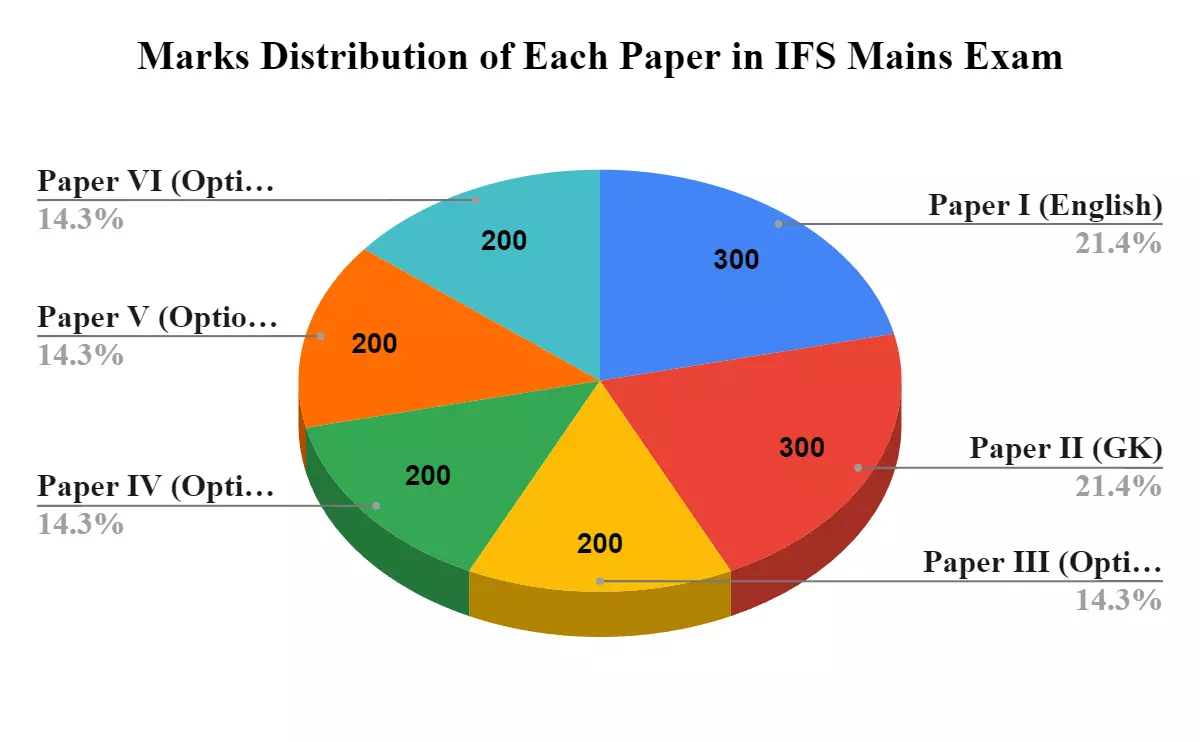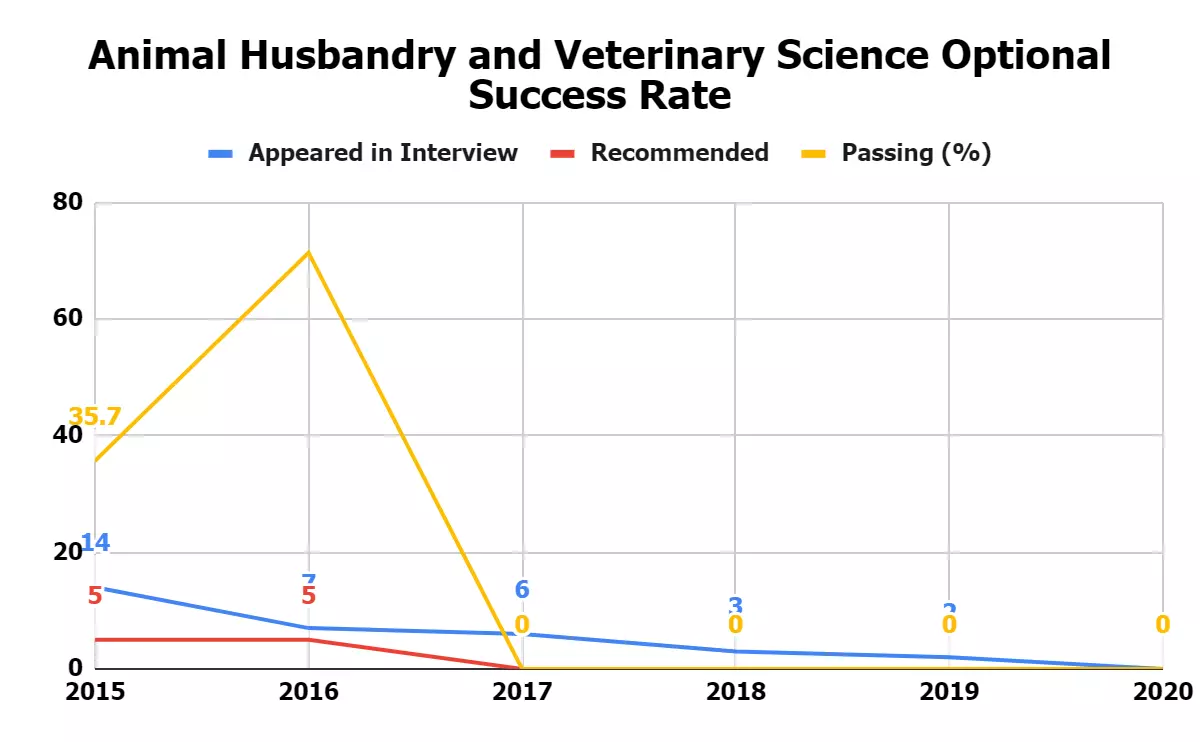The strategic significance of UPSC Animal Husbandry and Veterinary Science Paper in UPSC IFS Mains, with insights into its scoring potential, paper format, and trend analysis. Unlocking success with a comprehensive overview, including exam overview, success rates, and expert-recommended booklist for effective preparation

The UPSC IFS mains include a total of six papers with a total of 1400 marks. Out of 6 papers one paper is of English and one on General Knowledge. The remaining four papers (Paper I, Paper II, Paper III and Paper IV) cover optional subjects that candidates have chosen during the application form filling process. Although Paper I and Paper II have a maximum of 300 marks each, the remaining 800 marks of the mains examination depend on the optional subjects. It becomes very crucial to choose the right optional subject and adopt the right strategy so that candidates can score as much as possible. So in this article we will first explore the importance and weightage of optionals, and then we will analyze Animal Husbandry and Veterinary Science as an optional subject.
| Download IFS 2023 Animal Husbandry and Veterinary Science Optional Paper-01 Download IFS 2023 Animal Husbandry and Veterinary Science Optional Paper-02 |
In UPSC IFS mains examination candidates have to choose two optional subjects from the list specified in the official notification unlike UPSC IAS mains exam in which candidate has to choose only one optional subject. In IFS exam optional subjects have very high scoring potential because after Paper I and Paper II which consist of 600 marks optional have 800 marks so here optional plays a decisive role in determining your selection as well as to achieve a good rank.

It is evident that in the entire selection process, the optional subject plays a crucial role in preparing for the UPSC IFS exam, as it accounts for almost 48% of the total marks. This substantial portion contributes significantly to the overall evaluation of the entire exam.

Upon further magnification, we can conclude that in the IFS mains examination, the optional section carries almost 58% of the total mains marks. Therefore, scoring well in the optional section, along with Paper I and Paper II, will result in higher overall marks in the exam.
In the UPSC IFS Mains examination, Animal Husbandry and Veterinary Science Optional subjects include two papers, specifically Paper I and Paper II. Each of these papers have a maximum weightage of 200 marks, which makes a total of 400 marks for this optional subject. Among the various optional subjects mentioned by UPSC in IFS, Animal Husbandry and Veterinary Science is one of the 14 optional subjects available to candidates.
Animal Husbandry and Veterinary Science |
Syllabus for Animal Husbandry and Veterinary Science Paper |
| Paper I of Animal Husbandry and Veterinary Science Paper | Animal Nutrition-Energy sources, energy, metabolism and requirements for maintenance and production of milk, meat, eggs and wool. Evaluation of feeds as sources of energy.
Animal Physiology
|
| Paper II of Animal Husbandry and Veterinary Science Paper |
|
UPSC Animal Husbandry and Veterinary Science Paper (2018-2022): Download PDF
UPSC Animal Husbandry and Veterinary Science Optional Question Papers from 2018 to 2022 are readily available for aspirants seeking to enhance their preparation. We provided access to the UPSC IFS Animal Husbandry and Veterinary Science optional question papers in PDF format, an invaluable resource for your preparation.
| Year | Paper |
|---|---|
| UPSC IFS Animal Husbandry and Veterinary Science Optional Question Paper 2018 | Download Paper I |
| UPSC IFS Animal Husbandry and Veterinary Science Optional Question Paper 2019 | Download Paper I |
| UPSC IFS Animal Husbandry and Veterinary Science Optional Question Paper 2020 | Download Paper I |
| UPSC IFS Animal Husbandry and Veterinary Science Optional Question Paper 2021 | Download Paper I |
| UPSC IFS Animal Husbandry and Veterinary Science Optional Question Paper 2022 | Download Paper I |
Candidates appearing for the UPSC (Union Public Service Commission) IFS examination must make a thoughtful decision while selecting their optional subject, as it holds substantial weightage in the evaluation process. With a total of 800 marks allotted, the optional subject carries approximately 48% of the combined marks for both the written exam and the personality test (interview).
The table below offers a comprehensive overview of the success rate achieved by candidates who opted for Animal Husbandry and Veterinary Science optional as their optional.
| Year | Number of Candidates | ||
| Appeared in Interview | Recommended | Passing (%) | |
| 2015 | 14 | 5 | 35.7 |
| 2016 | 7 | 5 | 71.4 |
| 2017 | 6 | 0 | 0 |
| 2018 | 3 | 0 | 0 |
| 2019 | 2 | 0 | 0 |
| 2020 | 0 | 0 | 0 |

Animal Husbandry and Veterinary Science Paper: Trend Analysis and Success Strategies
By examining the past papers of the Animal Husbandry and Veterinary Science Optional, we can identify a trend in the types of questions asked. There is also a noticeable shift in the themes of the questions. Understanding the UPSC IFS Animal Husbandry and Veterinary Science Question Paper Trend Analysis is advantageous, as it allows candidates to streamline their preparation effectively and enhance their performance in this optional subject.
UPSC Animal Husbandry and Veterinary Science Paper: Pros for UPSC IFS Success
Booklist for UPSC Animal Husbandry and Veterinary Science Paper: Comprehensive Resources for Success
Please note that before selecting Animal Husbandry and Veterinary Science Paper as your optional subject, carefully weigh these disadvantages against the advantages and consider your own background, interests, and the time you can dedicate to preparation.
Booklist for Animal Husbandry and Veterinary Science Optional Paper
| Must Read | |
| NCERT Notes For UPSC | UPSC Daily Current Affairs |
| UPSC Blogs | UPSC Daily Editorials |
| Daily Current Affairs Quiz | Daily Main Answer Writing |
| UPSC Mains Previous Year Papers | UPSC Test Series 2024 |
No, these are not different papers these two segment will be asked in same papers
There are two papers of Botany each paper divided into two parts.
Yes you can choose both subjects.

<div class="new-fform">
</div>